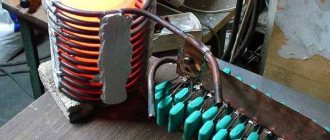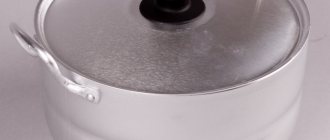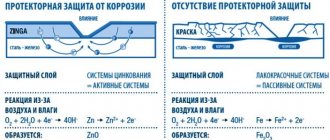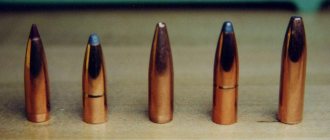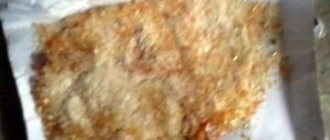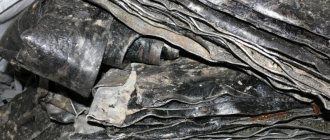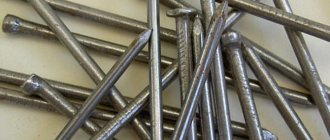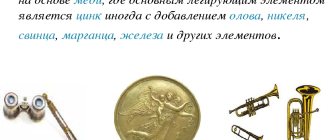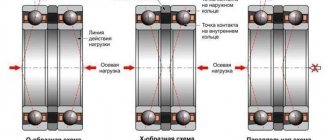Making fishing sinkers at home is not only a very simple task, but also very profitable. Considering the cost of branded items, compared to a large number of force majeure situations when fishing, you will save a good amount of money. Not to mention the specific features of “extreme” types of carp fishing (for example, in snags or algae), which always involve “losing” the sinkers.
But you will still have to fork out a little, for example, to purchase casting molds and plastic powder for a special coating of ready-made sinkers (which can be easily found on the shelves of fishing stores). But, believe me, these investments will bring you solid dividends in the future.
Materials for making sinkers
Experienced fishermen advise beginners to stock up on a large number of different sinkers. They can be very tiny and large, light and heavy, of different shapes. By gradually studying in detail the conditions of the reservoir where fishing is most often carried out, you can replenish your collection of cargo with the most convenient ones to use.
In specialized stores, the cost of shipping depends on weight. If a fisherman uses several gears at the same time, then it would be more rational to cast weights with his own hands at home. This is more profitable in many ways.
Gypsum
Gypsum powder for making molds
This material will be needed to produce molds for homemade weights. Only the combination of gypsum and lead has a number of specific features:
- when gypsum is heated to 200 degrees, moisture is released, which leads to splitting of the structure;
- after lead hardens, it is then difficult to remove it from the cell without harm to the entire form;
- Due to the microporosity of the metal, the finished product needs to be polished.
Therefore, gypsum is mainly used to make disposable molds.
Tin
Theoretically, small weights could be cast from tin. It is worth noting that tin weights are not capable of harming the fishing line. And solder can be made from a heavier metal. But the rationality of using such weighting agents is that they turn out to be too light. They are also visible to fish underwater.
It is permissible to add tin to lead.
Lead
A universal low-melting metal that does not interact with water and air is lead. It is also popular as a source material for casting weights because it is affordable. This metal is widely used in the automotive industry, railways and communication lines. However, it is not difficult to melt lead yourself, using kerosene gas (it has a melting point of 327 degrees). The simplest option is to make a weight from a regular nut.
What you will need
First of all, you need raw materials - crushed lead. It can be purchased at the market, at a recycling collection point, obtained from friends, or removed from an old battery. Usually it is a thin plate that is easily broken by hand and cut with metal scissors.
Next you need a container where the metal will melt. Utensils made of any metal will do, even a can. The melting point of lead is about 3300 C, which is significantly lower than for aluminum and steel.
You will also need a source of thermal energy that can quickly melt the metal: a miniature gas burner, any stove, an open fire, a stove. The main thing is to adhere to safety precautions.
Important! It is not recommended to melt metal in a residential building or building (garage, workshop) without exhaust hood or ventilation. This poses a risk of lead vapor poisoning.
To attach it, you need to make a hole in the sinker or insert a wire or swivel. The hole is drilled with a thin drill or made during casting.
The simplest form (matrix) is an unnecessary metal spoon.
Samples of future cargo
Samples are understood as ready-made weights taken as an example. They can be purchased products or previously made ones. The sample can be any object. For example, made from a bullet.
You can use bullets for the sample
The plaster mold can be slightly adjusted using plasticine. But not in large quantities, because when the gypsum hardens, it releases a lot of heat and the plasticine begins to melt. If a bullet is taken as the source, then you will need to equip it with wire loops, which are fixed with the same plasticine.
Loops made of wire for scaffolding are attached to the bullet
Dovetail
Here we are talking about a dowel with a sliding installation. This gear is suitable for fishing in heavy currents. The weight should have a rough surface so that it does not dangle spontaneously along the bottom. The product should also have an internal hole for fishing line.
The most popular option in this segment is considered to be the “dovetail”. Its name comes from its shape - in the form of the letter V. To make such a weight, you can use metal or homemade molds.
Sequencing:
- A steel wire pre-treated with silicone (for the channel) is placed in the mold.
- Connect and fix the parts of the form.
- Lead is heated and poured through a special hole.
- Wait for it to harden and remove the product, then polish it.
Ballerina
Another option for a sinker is “ballerina”. To melt it you will need metal, a container for melting it, and a mold. You also need to prepare stainless steel wire, heat-resistant cambric, a swivel and sandpaper.
Manufactured cargo "ballerina"
The manufacturing process itself includes the following steps:
- A mold is made from plaster, wood or other suitable material.
- A metal rod is placed in the central part.
- Lead is melted and poured.
- After hardening, the sinker is taken out.
- Sand it until smooth.
Now a swivel is installed at one end of the rod and secured with heat-shrinkable cambric.
Spoon
The easiest way to make a sinker for a donkey is to use a regular aluminum spoon. This is where its name comes from. To do this, place a container over the burner and melt lead in it. Then pour it into a spoon and wait for it to cool. Afterwards it comes off easily.
Spoon for casting weights will suit any size
The resulting shape of the weight is convenient in that the weighting material is not carried away by the current at the bottom. They lie flat and can remain in this position for a long time, holding the tackle. The disadvantage is that spoon-shaped sinkers are light in weight. After all, it is impossible to pour more than the dimensions of the cutlery dictate.
Making a mold for casting
You can make molds for casting sinkers yourself or use store-bought ones. In home-grown production, gypsum, wood, silicone, steel, and aluminum alloy are used as sources.
The most commonly used material is gypsum. Sequencing:
1. Prepare a mixture of gypsum.
2. The container and samples are lubricated with something greasy.
3. Partially pour the mixture into one half of the container and let it cool a little.
4. A sample weight is half-immersed in plaster.
5. Pieces of wire are inserted along the sides so that the halves can be separated later.
6.When the product hardens, apply oil or silicone to the surface.
7.Install the second half of the mold, which should have a hole for filling.
8. The gypsum composition is completely poured.
9.After complete hardening, dismantle the mold.
10. The structure is processed to eliminate defects.
The simplest thing that can be done at home is casting in wet sand. The void is created using a cardboard cone or cylinder. If the weight has metal elements inside, then they are installed in advance (before pouring the metal).
You can make a wooden mold by cutting out the required voids. A simple option is when lead is poured into a hole made in wood. It is more difficult when the mold is made of two components, each of which has indentations. These halves are connected and wrapped with wire so that they do not fall apart. After the lead hardens, the cast is separated.
Video on how to make a mold:
Forms for regular use
A plaster mold, even a very well made and dried one, will sooner or later collapse and you will have to make a new one or use a product suitable for frequent use.
Of course, for repeated use, molds made of heat-resistant steel or cast iron are best suited, but making these yourself is almost impossible. But cement is good for creating a melting mold, although this will require a little work.
Materials and tools for reusable uniforms:
- formwork material (wooden boards);
- liquid soap;
- cement;
- round file;
- fine sandpaper;
- clamp;
- cylinders for inserting into the filler hole;
- wire for making loops for the sinker.
For repeated use, molds made of heat-resistant steel or cast iron are best suited, but making these yourself is almost impossible
Casting sinkers
Before casting a fishing sinker, the lead must be crushed. It takes 20 grams of metal to melt it. This is the only way it will completely melt and heat up to the required temperature of 450 degrees.
The mold is connected and fixed with wire or something else, but without tightening (otherwise it may burst after hot metal is poured into it). Then the lead is drowned in an appropriate container. Many fishermen use an aluminum spoon or ladle for this purpose.
Preparing for pouring
When the lead becomes liquid, the film is removed from the top. Heat the mold for 5 minutes. After this, the metal slurry is poured into a special hole in the mold until the metal begins to protrude through the air channels. After this, the workpieces are left to cool. Disclosure is carried out no earlier than after 5-6 hours.
Ready tackle
You can pour lead into paper cones (made of cardboard) placed in wet sand.
Cones can be made from aluminum foil
Pour out flat sinkers for donks
In bottom fishing, flat weights are often used. As a rule, they have an oval shape. Such sinkers lie well on the bottom even when fishing in strong currents. How to make such sinkers for fishing? To do this, cut out an oval piece 4 cm long and 2 cm wide from elastic 3 mm thick. You can also make heavier weights. For this we will use larger workpieces
Next, we make 7-8 dents in the ground, as in the previous case, when we poured out a large sinker for the elastic band. We will be making two types of weights. One type is sliding, and the second is with an eye. To pour the sliding weights, cut thin wire into pieces that are 1 cm longer than the length of the recesses. Insert the wire into these recesses.
To obtain weights with eyes, we will do exactly the same as when pouring cone weights. Only the ear this time will peek out from the recess. If necessary, you can drill holes on the edge of the sinkers
Carefully pour the molten lead into containers and wait about 5 minutes. After this, you can carefully collect them with a spoon.
Final processing
After the casting process is completed, the finished products will need to be processed. If the load is made in a spoon, then to fasten the scaffolding you need to drill a hole in the metal body. It is done in the narrowed part with a drill with a 2 mm drill bit. Just be sure to remove the chamfer with a drill so that the fishing line does not tear on a sharp metal edge in the future.
To ensure that the weights are not particularly noticeable in water, they should be treated with an aqueous solution of potassium permanganate. Immerse the parts in it for several hours. The sinkers also need to be sanded using emery or a velvety file.
This is what homemade weights look like after processing.
When working with lead, do not forget about safety precautions. It is unacceptable to cast sinkers in a closed room, so as not to inhale toxic fumes.
Also, it is unacceptable to use utensils for cooking.
Pros and cons of making sinkers at home
Tackle with homemade weights has its advantages and disadvantages. The first include:
- availability of source material;
- high consumer qualities of finished products;
- the process is not labor-intensive;
- the ability for one person to smelt the required number of products;
- not costly;
- ability to choose weight and configuration.
But there are also problems. When working with heavy metal, there is a high risk of injury. It’s not always possible to get what you need on the first try. The process will require a set of tools.
As a result, weights must meet basic requirements. They should be:
- heavy so that the accuracy of casting the equipment is maximum;
- streamlined (roughness on the surface leads to the appearance of turbulence in the water, which frightens the prey);
- with reliable fastening for scaffolding;
- invisible in the aquatic environment;
- made from simple materials and in artisanal conditions with minimal use of tools.
Where to get lead
You can make weights from any lead you have at hand. It could even be old sinkers. By visiting any tire shop, you can purchase unnecessary weights used for balancing. The only thing is to remember to remove metal inclusions from them. There is also lead in car batteries. True, you will have to make a lot of effort to get lead from there.
Power cables, or rather their coating, are also suitable. It is made of lead plates, 2 mm thick. Do not forget about the opportunity to purchase the desired metal in the form of sheets or ingots. The first option is better, but the layers can be too large and it is recommended to purchase them together with someone else.
The most basic methods of casting fishing weights are considered. They are easy to make even without a mold. If you have a metal blank, then you can pour weights to order in batches and make good money from it. The main thing is to find the lead.
What are fishing weights made of and where to buy
Lead for fishing equipment, jig heads, and bottom sinkers is no different from the alloys used in the production of technical products. Lead weights for fishing, namely for assembling float, bottom and jig gear, can be made from any technical and melted metal. To do this, you need to go to the collection point and buy materials suitable for this. Any lead products are suitable for remelting, but if you need to make sinkers using mechanical action, then you should buy plates or sheet lead. In bottom rigs, thick sheets are usually used, while thin and small pieces of lead are suitable for float rigs. buy lead for casting sinkers in Moscow at AKBscrap, the company buys this metal and sells it at low prices.
If you decide to make fishing sinkers yourself by melting lead, then you need to prepare the tools for this in advance. Decide for yourself which lead to buy - the pieces must be of the appropriate size for the container in which it will be melted. You should not buy too much of this metal - its use should be exclusively for fishing and hunting; this alloy is not suitable for domestic purposes due to its toxicity.


